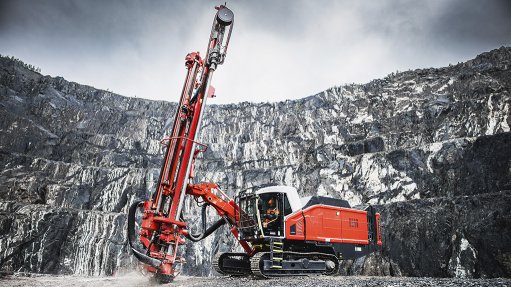
The Sandvik Leopard DI650i is designed for high-capacity production drilling applications in surface mining and for large-scale quarry applications
A global shift towards autonomous drilling in the quarrying sector is seen to be the result of a number of benefits offered by the automation of surface drill rigs, such as an increase in productivity and cost-savings.
Sandvik Mining and Rock Solutions has noted a growing interest in drilling automation in Southern Africa and states that many quarry customers already own drill rigs which are automation-ready. The company highlights that its solutions offer a high level of flexibility, allowing customers to select the level of automation that best suits a specific operation.
“Where the customer still wants an operator in the cab, for instance, there are various one-touch buttons to improve performance and accuracy,” says Sandvik Mining and Rock Solutions surface drills business line manager Vanessa Hardy. “These functions include the rig being able to level itself before operation, to automatically bring the drill up into a drilling position, and to auto-collar the drill.”
The on-board technology also allows the operator to set, store and recall operating ‘recipes’ for different drilling applications. These recipes apply a certain predefined combination of rotations, pressures and other variables and can be automatically implemented at the push of a button.
Sandvik’s AutoMine Surface Drilling system is an automation solution for autonomous and tele-remote operation for a wide range of Sandvik iSeries surface drill rigs. The company asserts that it has made safety, efficiency and productivity the main focus of its iSeries range of intelligent drill rigs, with the aim of helping customers to reduce operating costs. “Our automation technologies have also opened doors for remote working; this may involve an operator standing on the bench while watching the rig, or working from a control room far from site,” explains Hardy.
She emphasised that the key advantage of these remote operation options was to enhance operator comfort and safety, while at the same time raising the performance of the machine. The sensors and automatic settings can also protect the equipment from being pushed too hard, helping to reduce the total cost of ownership by bringing down maintenance costs.